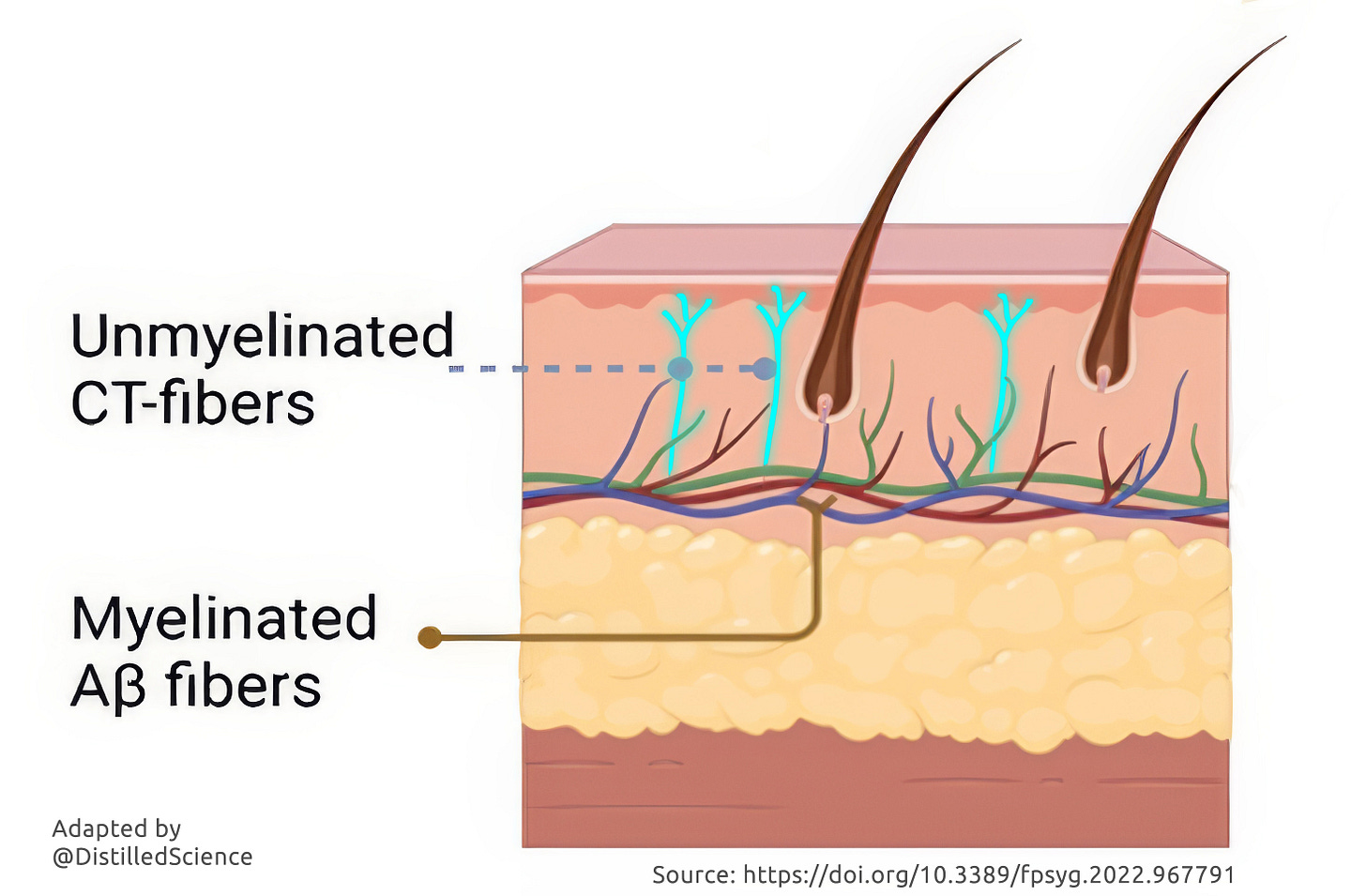Hacking Your Oxytocin: The Science Behind Why Some Touch Feels *So* Good
Tingles & Touch: Part 1
Why does gentle stroking feel so good, while firmer pressure feels just... meh? There's fascinating neuroscience behind it, and a way to use it to make those good feelings even better!
Your Secret "Tingle Nerves"
You have tons of nerves in your skin, but let's talk about some VIPs: scientists call them CT-Fibers, but think of them as your 'Tingle Nerves'! These special nerves ignore pressure or pokes. They ONLY respond to slow, light stroking at 1-10 cm per second – exactly the speed we use for comforting touch.
We think they evolved specifically to boost bonding and trust!
Now, both tingly touch and things like massage cause a release of Oxytocin1 – often called the 'love hormone,' but it's more of a 'bonding hormone.' But here's where it gets WILD!
The Oxytocin Effect Gets Specific
To isolate the effect, scientists gave2 people extra Oxytocin using a pill or spray. What happened? People rated that gentle, 'tingle' touch as feeling SIGNIFICANTLY more pleasurable! But the feeling from massage? Barely changed!
Oxytocin specifically boosts the pleasure from that light, bonding touch.
AND IT GETS EVEN MORE WHOLESOME!
In another study3 they boosted Oxytocin, then told people they were being gently stroked by either a stranger OR their own romantic partner (who they were deeply in love with!).
The result? That delightful pleasure boost ONLY happened when they BELIEVED it was their partner touching them! Your brain literally dials up the pleasure for someone you love!
In both of these studies they also measured brain activity in pleasure centers and found results in-line with the subjective reports.
The Oxytocin Ramp Technique
So, how do you use this sweet science to seriously upgrade connection (and maybe more 😉)? Try the 'Oxytocin Ramp':
Warm-Up! – Start with hugs, cuddling, maybe a gentle massage. You're naturally building up those Oxytocin levels, like pre-heating an oven for maximum deliciousness!
The Magic Touch! – As you both feel more relaxed and connected, shift towards that slow, light, Tingle-Nerve stroking. Thanks to the Oxytocin you've built up, this is when that touch will feel the most intensely pleasurable and bonding!
And speaking of feeling good... Turns out, higher Oxytocin levels are ALSO linked to more intense Big O's. If you want more on that science, let me know.
VIDEO ENDED HERE👆
ADDITIONAL COMMENTS
These studies focused on how oxytocin influences the perception of social touch. Social touch is, as the name implies, touch that has a social and emotional component (like a hug, a caress, or a pat on the back), as opposed to purely functional touch (like a doctor examining you). One fascinating aspect of oxytocin is that it’s impossible to separate out its physiological effects from the social context.
That light, tingly touch that feels so good uses the same circuits that we evolved as defense mechanisms for things like mosquitoes–it’s only once the brain has identified the source as non-threatening that it starts to feel pleasurable.
STUDY NOTES: They compared two different ways of administering oxytocin:
Intranasal: Spraying oxytocin into the nose. This is the most common method in human oxytocin research, and it's often assumed that the oxytocin goes directly to the brain.
Oral (Lingual): Spraying oxytocin onto the tongue. This method is thought to primarily increase oxytocin levels in the bloodstream (peripherally), with less direct access to the brain.
Surprisingly, it didn't matter whether the oxytocin was given through a nasal spray or an oral spray. Both methods had the same effects. This suggests that this function of oxytocin might be working primarily by increasing levels in the bloodstream, rather than needing to directly enter the brain.
This is part 1 of an ongoing series that already has many further videos published!




